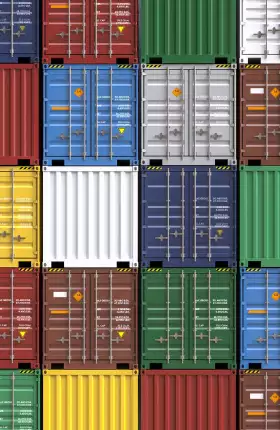This article was written before further tariff changes were announced on July 30. Although a 50% tariff has been imposed on imports of semi-finished copper products and intensive copper derivative products, refined copper has now been temporarily exempted from these 50% duties until Jan 1 2027, and Jan 1 2028, where it might receive a 15% and 30% tariff, respectively, pending an update on domestic copper markets issued by the Secretary of Commerce in June 2026.
Right now, the US has proposed a 50% tariff on imports of copper—a material critical to industries such as energy, electronics, and construction. The tariff applies to all countries and is set to take effect August 1.
The Trump administration announced the impending tariff on the grounds of national security under Section 232 of the Trade Expansion Act, the same mechanism cited in June 2025 to impose a 50% tariff on imported steel and aluminum products.
The So What
The US relies on imports for more than half of the copper it consumes, primarily from Chile, Canada, Mexico, and Peru.
Stockpiling of copper in anticipation of the tariff increases has already pushed prices to record highs on the US Commodity Exchange. Tariff increases could send them higher for US importers, posing significant challenges to manufacturers and consumers of goods containing the metal.
“If copper becomes more expensive and less available, this could significantly slow down investment in energy infrastructure, construction, transportation, and electronics,” says Janice Lee, a BCG managing director and partner who works with the metals and process industries.
If implemented as announced, here are some of the biggest implications of a 50% copper tariff:
- It would add $8.6 billion to the cost of raw copper and refined copper imported into the US and much more if the tariffs extend to downstream derivative products.
- Material costs would rise significantly for the US construction industry, which uses 42% of copper products consumed domestically, followed by manufacturers of electrical and electronics goods, transportation equipment, and consumer goods. US energy costs would also rise, given the electrical grid’s reliance on copper wires and other components.
- Few domestic substitutes for imported copper are currently available. The US mines only around 5% of the world’s ore and lacks enough domestic smelting and refining capacity to produce raw copper at the scale needed to satisfy the domestic market.
Building new domestic copper capacity would require considerable investment and take years, even with expedited permitting.
“The US would need to build a whole copper processing ecosystem,” says Cristián Rodríguez-Chiffelle, a BCG partner and expert on international trade. “That won’t be easy because these are multiyear and, often, multidecade projects.”
The US could meet some of its own copper needs by increasing recycling, says Timm Lux, a BCG expert in nonferrous metals and recycling. It’s also possible that the US could decide to grant exemptions from the copper tariffs to key trading partners or domestic industries.
The US hasn’t specified whether the tariffs would extend beyond raw to downstream derivative products with significant copper content, such as electrical cables, transformers, and batteries. It’s also unclear whether certain nations or products will be exempt. Bilateral talks between the US and Chile, the world’s leading copper supplier, are scheduled for late July.
Stay ahead with BCG insights on industrial goods
Now What
Companies across the copper supply chain should establish robust strategies to monitor, navigate, and respond quickly to evolving trade rules. Tariff command centers can analyze the impact under various scenarios on their businesses and those of competitors, refine go-to-market strategies, and help reconfigure supply chains.
US copper miners are likely to benefit from higher prices and demand as tariffs raise import costs. But growth opportunities will be constrained by limited domestic mining, smelting, and refining capacity. Because industrial demand for copper will likely remain strong, however, the long-term business case for investing in the copper value chain may be compelling, regardless of future tariffs.
Non-US copper companies exporting to the US will also need to skillfully navigate the evolving tariff landscape. The margins and competitiveness of companies that aren’t integrated upstream will face pressure from both rising costs of scrap and raw copper and from their limited ability to pass higher costs down to downstream customers. In addition to new foreign markets, they should search for opportunities in segments unaffected by tariffs, such as certain derivative products. Copper-product exporters should also revisit their pricing strategies and consider leveraging their experience and expertise to invest in upstream, integrated US processing facilities.
US industries dependent on copper should prepare for rising costs and potential copper supply constraints. Copper-consuming industries should also consider investing recycling and engage with policymakers to seek tariff exemptions or adjustments.
Non-US industries dependent on copper could also face rising costs and inventory shortages as companies continue to stockpile. Over the medium to long term, copper prices could stabilize as new sources of supply come online. They must also prepare for a scenario in which tariffs broaden and trigger retaliations that could create new cost and supply constraints. Manufacturers in China may be little affected, however, because it is the world’s biggest refiner and has its own trade relationships with nations that supply raw copper.




